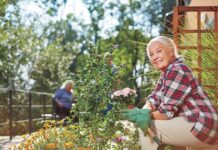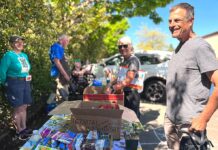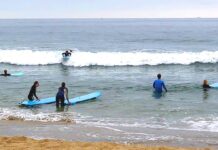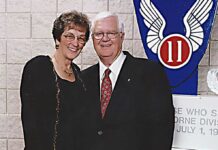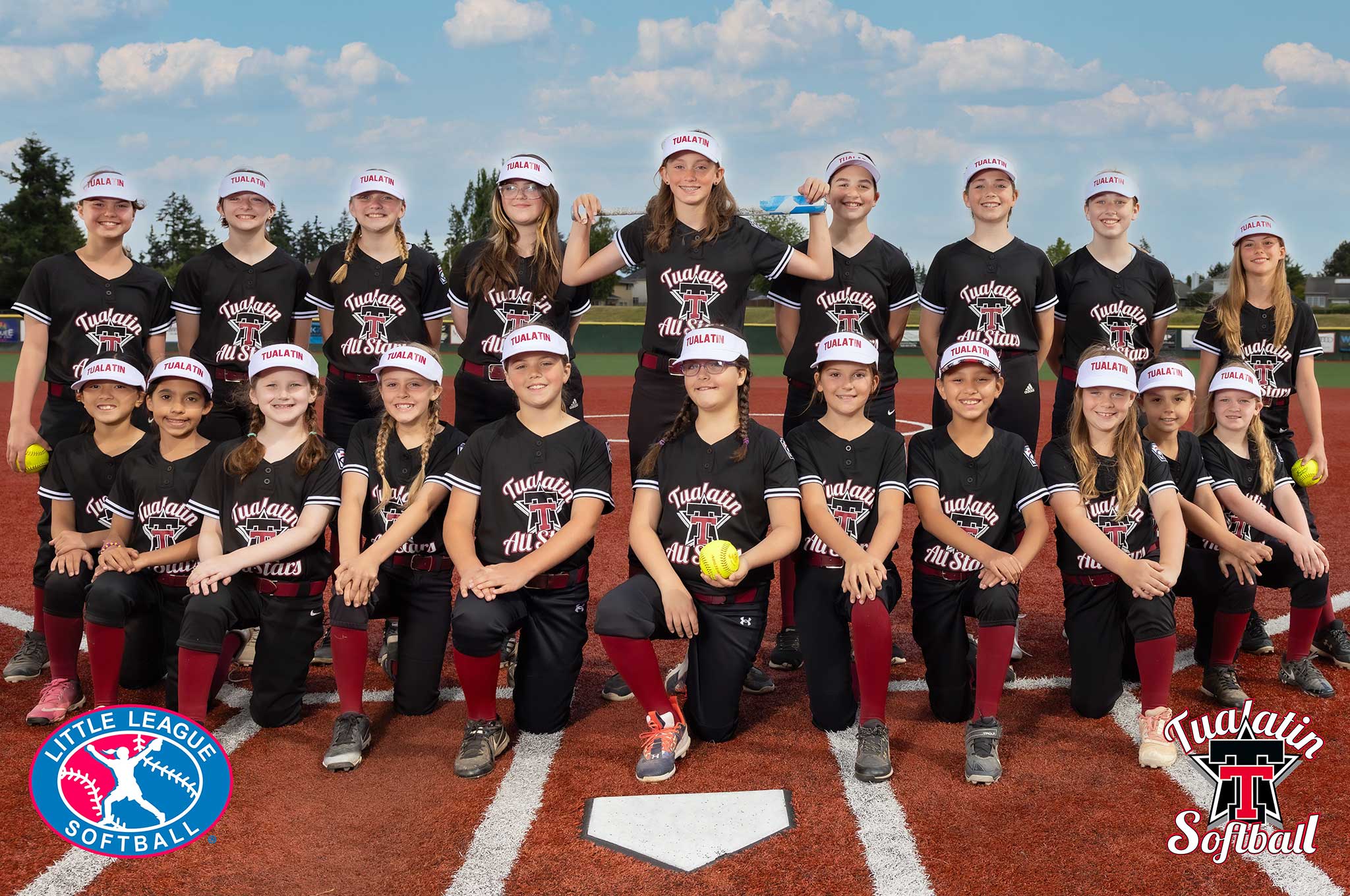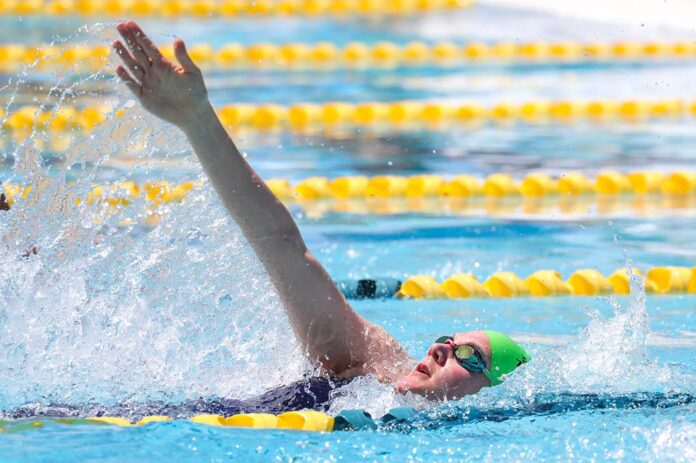
When Sara Shepherd thinks about something that is so very important to her, shaped who she is today and continues to have a profound influence on her life, one word comes to mind: swimming.
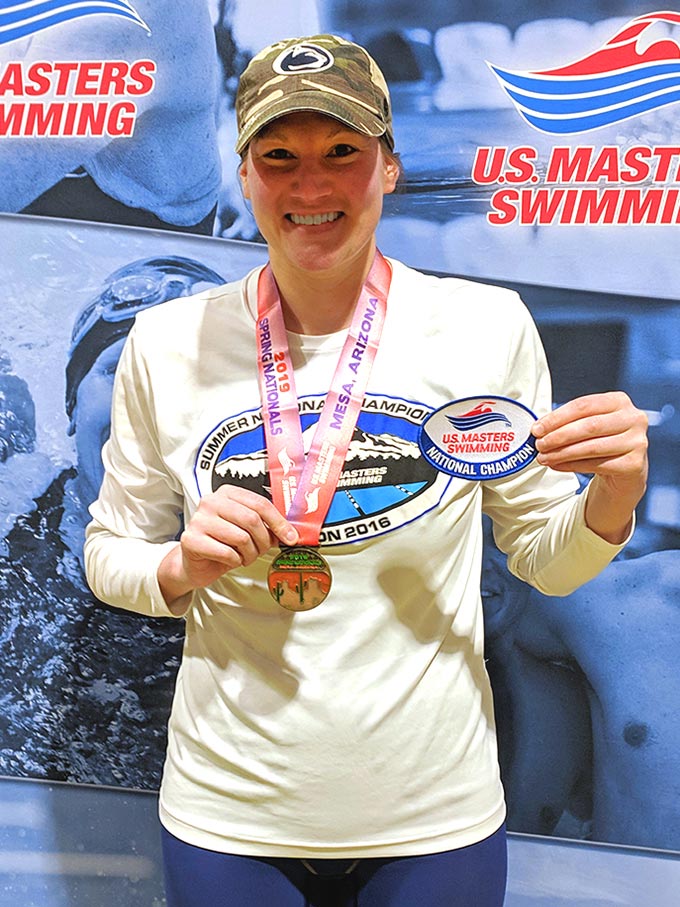
She may have participated in volleyball and softball earlier in life, but only swimming has stuck with her throughout her life.
“I have been training and swimming competitively, year-round, for the past 31 years,” said Shepherd, who is well known in Tualatin for her leadership role as the Supervisor of the Juanita Pohl Center.
Starting at age 7 at her local YMCA in Pennsylvania, she competed for summer teams and a private club all the way through high school. She went on to attend Penn State University, where she swam for the Nittany Lions all four years, helped her school earn two Big Ten championships and was named team captain as a senior.
These days, she continues to swim as a member of the Tualatin Hills Barracudas Masters Swim Team in Beaverton. This satisfies her competitive spirit as well as her desire to stay physically fit and ensure she maintains a high quality of life.
“Quality of life is important to me,” she said. “I want to live my best, strongest, healthiest life every day and staying active and physically fit helps me do that. Sports, exercise, and being physically active have always been and continue to be a huge part of my life – it’s my ‘me’ time and I would never give it up. I still love to compete and I want to continue to perform at the highest level possible.”
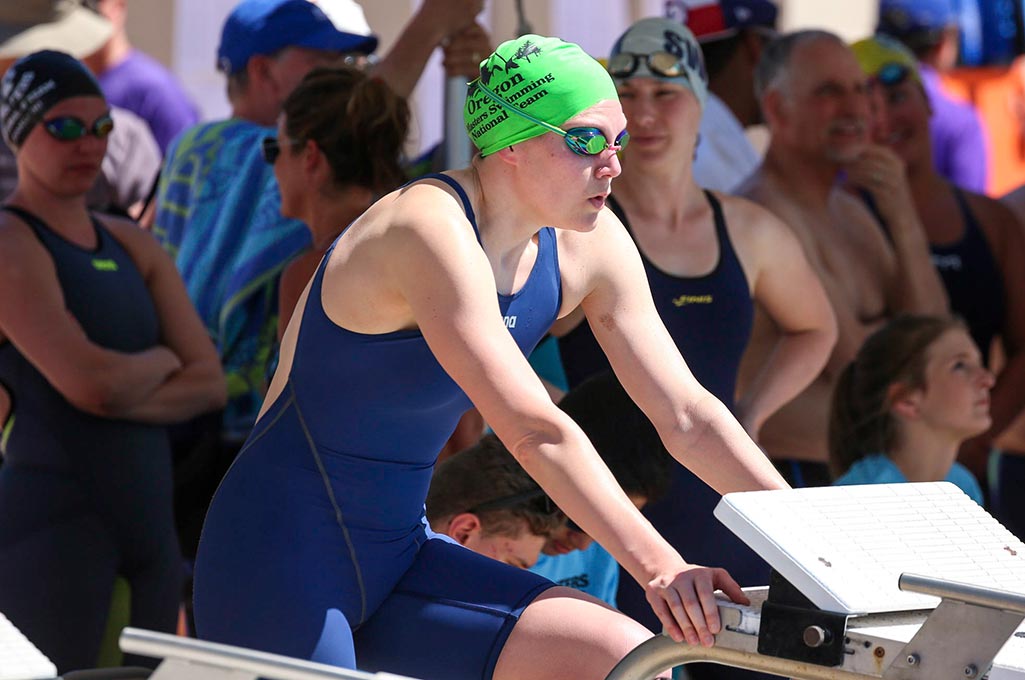
Swimming is a notoriously grueling sport when it comes to training, and many athletes are happy to let go of the three-hour workouts and accompanying dryland training. Shepherd says that after her senior season at Penn State she was convinced she never wanted to compete again. But it didn’t take her long to discover that wasn’t true.
“I really don’t think I discovered my true passion for the sport of swimming until after college,” she said. “Swimming through high school and college was one of the most demanding and rewarding experiences of my life. By my senior year at Penn State, I was so ready to be done and I vowed that after my last championship meet, I would never swim again. Well, that did not happen, not even close.”
She found that when she was able to do things on her own terms, it became much more enjoyable.
“I actually never stopped swimming after college,” she said. “Swimmers are a special group of people and the friendships I have made throughout my swimming career are one of the main reasons I stuck with the sport for so long. My Masters team out here is just amazing. Some of the best people I have ever met, we work hard and have so much fun.”
These days, Shepherd maintains a consistent workout routine in the pool that was, admittedly, interrupted by COVID-19, but has returned now to a semblance of normality.
“My current workout routine has actually stayed consistent throughout the years,” she said. “Things might change as I sign up and train for different events, but overall, a typical week for me includes three to four days of swimming, two to three days of running and at least one day of strength training. In the summer months I also like to get out on my bike. On average, I work out about nine hours per week, with at least one rest day.”
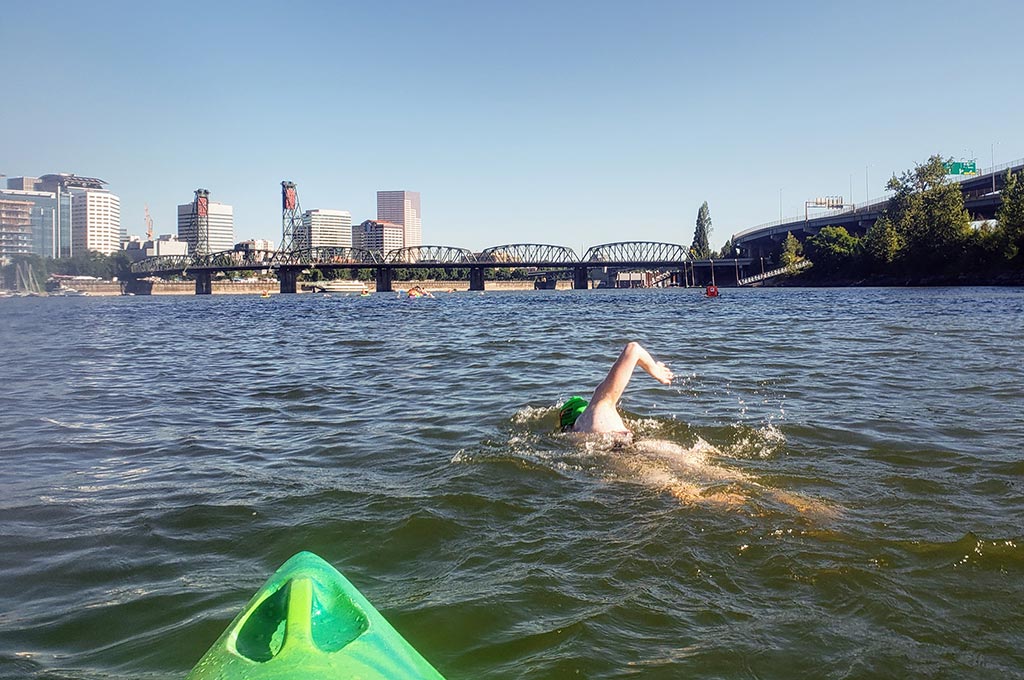
One of her most significant health improvements over time was learning and understanding that taking rest days is okay; it is one of the key components for training, recovery and keeping the body injury-free.
She trains in Beaverton at the Tualatin Hills Aquatic Center. But, when pools were shut down for most of 2020 due to the pandemic, the team shifted practices to Henry Hagg Lake.
The Barracudas attract all types of swimmers, from fitness swimmers to triathletes, and more competitive swimmers. The team swims early in the morning during the week, at 5 a.m., and on Saturdays at 6 a.m. On top of that, there are noon workouts on weekdays, all of which are improved by the social aspect of being part of a dedicated team.
“It’s like my extended family out here,” she said.
Diet:
I have learned that moderation is key. I do not restrict myself from anything and I’ll admit, I eat a lot. It’s one of the things that motivates me to move so much. I love all kinds of fresh fruits and veggies and I certainly love my sweets and treats, in moderation of course. I am a planner and I love to cook and try new things, so meal planning during the week is enjoyable. I might tweak my diet as big swimming or running events come up, but I tend to stay consistent with what I eat on a daily basis.
Playlist:
I do not listen to music when I swim. I like to focus on my stroke, the set and my times. However, listening to music when I run is a must. I always have a running playlist geared up and ready to go. I listen to random types of music when I run, depending on my mood – country, rock, pop, new and old school hits – if it has a catchy, quick beat, then it’s probably been on one of my playlists. Current favorite groups on play right now include Collective Soul and Barenaked Ladies, Avicii, Flo Rida and sometimes even MC Hammer makes an appearance. Cause I am too legit to quit!
Gear:
My swim mesh (equipment) bag consists of fins, a pull buoy, and paddles. Fins are my favorite piece of swim equipment – they help swimmers feel the difference between kicking from the hips (which you want to do) compared to kicking from the knees. They also help develop more flexibility and range of motion in your ankles and feet. The pull buoy teaches proper body position by creating extra buoyancy for your hips. Often used with a buoy, paddles add surface area to your hands and place increased resistance on your muscles as they work to catch and pull the water.
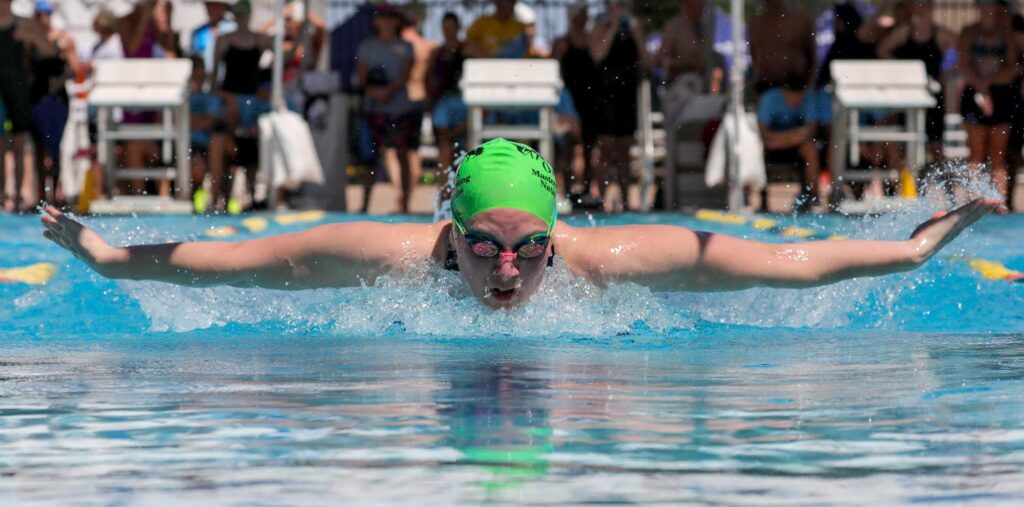
Advice:
I really like swimming with a group of people. Teammates hold me accountable in getting up early in the morning and getting the workout done. They also challenge me to work harder and get the best out of myself. I have that internal competitive drive, but having teammates push me definitely adds to it. I like to have a plan – a goal to work toward, something to train for. It could be as little as adding an extra swim day during the week or as big as training for a full Ironman (triathlon). Everyone starts at different stages and moves at different paces, but if you give yourself a plan, take it one day at a time, have a good support system and don’t give up, it will be worth it in the end.
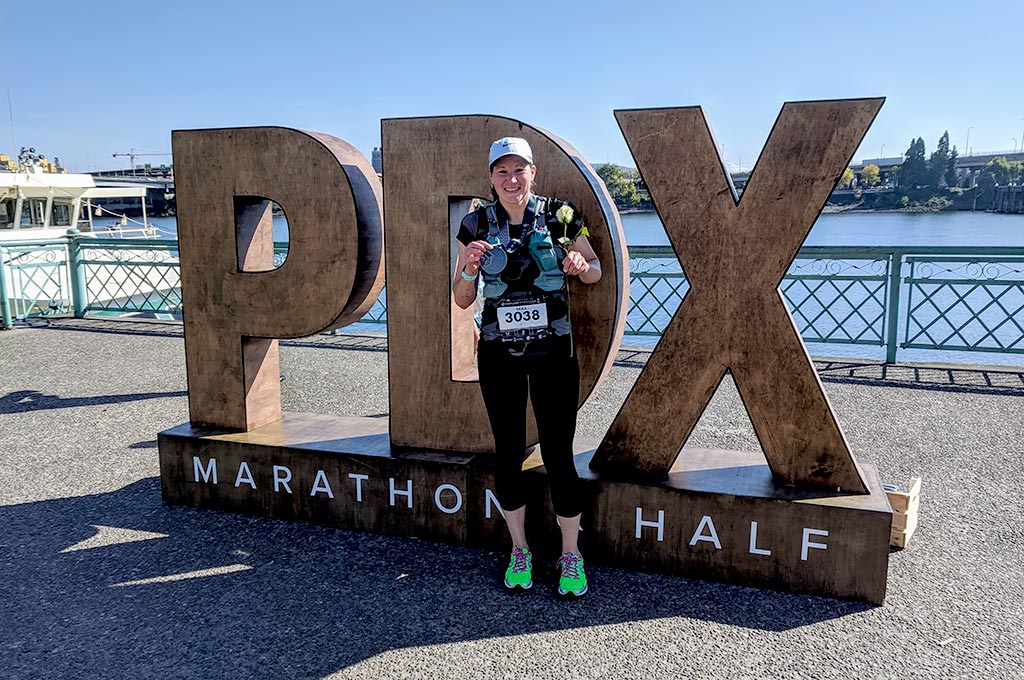
Publisher’s Note:
MY TUALATIN WORKOUT is a new feature highlighting local Tualatin citizen’s inspirational stories of health and fitness. We’re looking for interesting people with interesting workouts. Know someone we should feature? Contact Mike Antonelli at mike@tualatinlife.com or (503) 692-9215.

